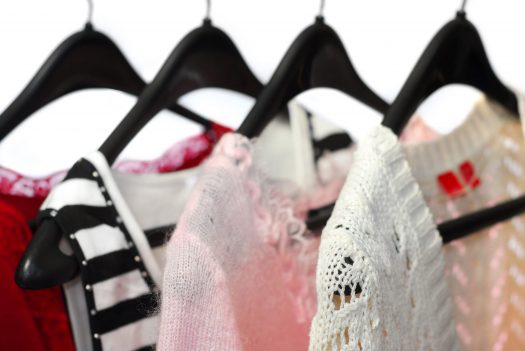
- This event has passed.
Money Moment: Consignment Shops: Buying and Selling
June 13, 2017 @ 11:58 am CDT

By Dr. Jennifer Hunter
Welcome to Money Moment episode 6, with your host Dr. Jennifer Hunter. Today’s topic is one Jennifer particularly enjoys: consignment shopping.
Clothing is one of the largest spending temptations that we have. The desire to look your best for a special occasion or while at work or school is natural. However, there are many ways to maintain a stylish and up-to-date wardrobe while still being conscious of your monthly budget.
 Take stock of your current wardrobe
Take stock of your current wardrobe
Start by doing an inventory of your closets. Consider any upcoming events that you may have scheduled and make a list of clothing needs. Discard any clothes that you do not wear or that may no longer fit. Instead of packing away your old clothes in the attic and heading to the mall to buy new items, consider selling your unwanted items and dressing up your wardrobe at local consignment shops.
Selling at Consignment and Resale Shops
Know the difference between resale and consignment shops
Typically a resale shop buys your clothes up front. You can take your items in that you want to sell, the shop selects the items that they want to keep and they pay you immediately.
A consignment shop pays you a percentage of the selling price of your item, only after it is sold. Typically you will earn more by being a consigner as opposed to selling at a resale shop, but you do have to wait longer for your money.
Both resale and consignment shops usually offer what is called a seller’s premium: they will pay you more if you are willing to accept store credit as opposed to cash.
Do your research
Prior to taking your clothes in some place to sell, visit local resale and consignment shops to find stores with items similar to the ones that you are looking to sell. Second hand shops will often target specific clientele, e.g. only children’s clothing or women’s professional wear. Finding the stores that have clothes similar in both style and brand will help you earn the most money.
Once you have identified the stores that match your style, find out their consigner policies. Some stores will only accept specific name brand items or items no more than 2 years old. Generally items must be in new, like new or gently worn condition, free of stains and holes and freshly laundered. Some stores require you to bring items on hangers, while others prefer to hang the items themselves. Some stores only accept seasonal clothing during specific time period, others accept all seasons all year.
Ask questions of the stores. Find out how to access your account, when and how you get paid, what happens if your clothes don’t sell and when items get marked down. Most consignment stores will assign you a consigner number that you can use to check your account by calling the store or accessing the information online.
Prepare your items
When preparing your items to take into the store, think like a buyer. Is this something you would buy? If you are consigning clothes you want someone else to purchase your items. Carefully review each piece of clothing, checking for stains, missing buttons, broken zippers etc. Most stores will not press your clothing for you, therefore bring your clothes in freshly ironed.
Be a Bargain Hunter
Resale, consignment and thrift shopping can often be a way to find like-new clothing for bargain prices. Typically, second-hand shops price items between 25-75% off of new retail cost. During end of season sales, this may be discounted even more. Explore the second-hand shops in your area. Find the stores that offer items with the brands, styles, and sizes that fit your taste and needs. Sign up for the store mailers and social media to get updates about sales or special items coming to the store.
Be a picky buyer
At resale and consignment shops, the store employees have normally looked over the items prior to accepting them but you need to verify they are in good condition: no stains, tears, missing buttons, broken zippers, holes in the pockets and so forth. Check the sizing carefully because items that have been washed and dried may have shrunk so you need to be certain the clothes you are buying will fit.
Buying and selling consignment shops can be a fun way to earn a little extra cash and a great way to save big on items that you need.
Stay tuned for the next episode about setting financial priorities.












